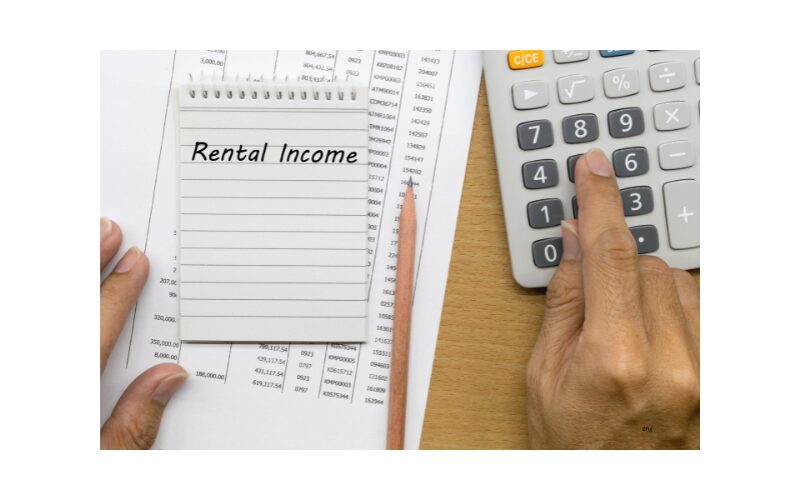Building Rental Income Through Real Estate Investments: A Complete Guide
Real estate investment has long been a reliable way to build wealth and generate consistent rental income. From owning rental properties to exploring Real Estate Investment Trusts (REITs), there are multiple pathways to turn property investments into a steady cash flow. If you’re curious about how to get started or looking to optimize your real estate strategy, this guide covers everything you need to know about building rental income through real estate investments.
Why Real Estate is a Smart Investment for Rental Income
Investing in real estate provides a tangible asset that not only generates regular rental income but also appreciates in value over time. The beauty of real estate lies in its versatility: whether you’re purchasing a single-family home to rent out or diversifying through REITs, the opportunities are vast.

Benefits of Building Rental Income
- Steady Cash Flow: Monthly rental payments provide a predictable income stream.
- Asset Appreciation: Real estate tends to increase in value over time, contributing to long-term wealth.
- Tax Benefits: From depreciation to mortgage interest deductions, real estate investments offer numerous tax advantages.
- Hedge Against Inflation: Rental income typically rises with inflation, ensuring your investments keep up with the cost of living.
For example, a rental property purchased in a growing market like Austin, Texas, may generate $1,500/month in rental income while appreciating in value by 10% annually.
Step-by-Step Guide to Building Rental Income
Creating a successful rental income strategy requires careful planning and execution. Here’s a step-by-step guide to help you get started:
1. Research the Market
The foundation of any profitable real estate investment is thorough market research. Look for areas with:
- High rental demand
- Growing job markets
- Proximity to amenities like schools, hospitals, and public transport
For instance, cities with expanding tech hubs, such as Raleigh or Denver, often attract tenants willing to pay a premium for convenience.
2. Choose the Right Property
Not all properties are created equal when it comes to rental income. Focus on properties that:
- Are priced below market value for potential equity growth
- Require minimal renovations to attract tenants quickly
- Offer competitive rental yields (aim for 6-8% for a solid return)
Pro Tip: Use tools like Zillow or Redfin to compare property prices and rental rates in your chosen area.
3. Crunch the Numbers

Before purchasing a property, calculate key metrics such as:
- Rental Yield: (Annual Rental Income ÷ Property Value) × 100
- Net Cash Flow: Monthly rental income minus expenses like maintenance, property management fees, and mortgage payments.
- ROI (Return on Investment): (Net Annual Income ÷ Total Investment) × 100
For example, if you purchase a $250,000 property generating $20,000/year in rent with $12,000 in annual expenses, your ROI would be 3.2%.
4. Secure Financing
If you’re not buying a property outright, explore mortgage options that offer favorable terms. A lower interest rate or a higher loan-to-value ratio can significantly impact your cash flow.
5. Market and Manage Your Property
Attracting the right tenants is crucial for consistent income. Advertise on platforms like Zillow, Craigslist, and local rental listing sites. Screening tenants carefully minimizes the risk of missed payments or property damage.
Diversify with Real Estate Investment Trusts (REITs)
If managing a property isn’t your style, consider investing in REITs. These trusts allow you to invest in real estate without the need to purchase physical property. REITs pool money from multiple investors to manage and profit from large-scale properties like office buildings, malls, and apartments.
Types of REITs
- Equity REITs: Own and manage income-generating properties.
- Mortgage REITs: Provide financing for income-producing real estate.
- Hybrid REITs: Combine property ownership with mortgage investments.
Advantages of REITs
- Liquidity: Unlike physical real estate, REITs can be bought and sold on stock exchanges.
- Low Entry Barrier: You can start investing with as little as $500.
- Passive Income: REITs pay dividends regularly, offering a hands-off way to earn rental income.
For example, investing $5,000 in a reputable REIT offering a 5% annual dividend yield could earn you $250/year in passive income.
Maximizing Rental Income: Tips and Strategies
Once you’ve acquired a rental property or invested in REITs, it’s essential to maximize your income. Here are a few strategies to help:
1. Increase Property Value
Simple upgrades can justify higher rent and attract long-term tenants. Consider:
- Adding energy-efficient appliances
- Upgrading bathrooms or kitchens
- Offering amenities like in-unit laundry or covered parking

2. Price Competitively
Research comparable properties in your area to set a rental price that’s both competitive and profitable. Tools like Rentometer can help you assess market rates.
3. Minimize Vacancy
Consistent income depends on minimizing vacancy periods. Strategies include:
- Offering lease renewals with small incentives
- Maintaining the property to ensure tenant satisfaction
- Marketing your property in advance of lease expirations
4. Opt for Short-Term Rentals
If local laws allow, consider turning your property into a short-term rental on platforms like Airbnb. These rentals often generate higher income, especially in tourist-heavy areas.
Tax Benefits of Rental Properties
One of the most significant advantages of rental income is the tax benefits. Investors can deduct:
- Mortgage interest
- Property taxes
- Insurance premiums
- Maintenance costs
- Depreciation (a percentage of the property’s value)
For example, if your rental property generates $20,000 annually but you deduct $8,000 in expenses, you’ll only be taxed on $12,000 of income.
Pro Tip: Consult a tax advisor to ensure you’re maximizing deductions and staying compliant with local regulations.
Case Study: Turning a Rental Property into a Wealth-Building Asset
The Scenario:
Sarah, a first-time investor, purchased a $200,000 duplex in a growing suburb. She rented each unit for $1,000/month, generating $24,000 annually. After deducting $12,000 for her mortgage and $3,000 for expenses, her net cash flow was $9,000/year.
The Outcome:
Over five years, Sarah’s property appreciated by 30%, and she reinvested her rental income into a second property. By repeating this strategy, Sarah grew her portfolio to four properties in a decade, earning over $50,000/year in passive income.
Conclusion: Start Building Rental Income Today
Real estate investments are one of the most reliable ways to build long-term wealth and generate passive income. Whether you’re managing rental properties or investing in REITs, the opportunities are endless. The key is to start with a clear strategy, do thorough research, and make informed decisions.
Ready to take the first step? Explore your local market or dive into REITs to see how real estate can work for you. Whether you’re aiming for a small side income or full financial independence, real estate has the potential to unlock your financial goals. What’s your next move? Share your thoughts or experiences in the comments below!

Larry Mac
Hi there, and thanks for stopping by! My name is Larry, and I’m the voice behind 6fig.com. I search the Internet to try and find Money making opportunities to share.. Thanks for stopping by, feel free to subscribe and comment. Thank You!
You Got This, I Learned these skills and More at Wealthy Affiliate. Hey if this 65 year old Grandfather can make money online, you can too!
This website got me on the path to making money online! Click Here to Start!


